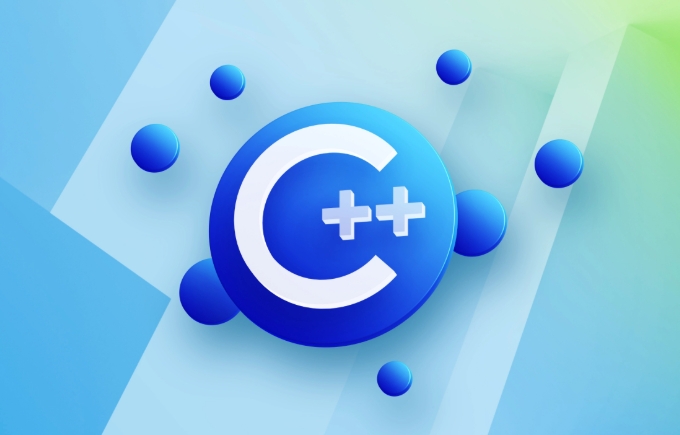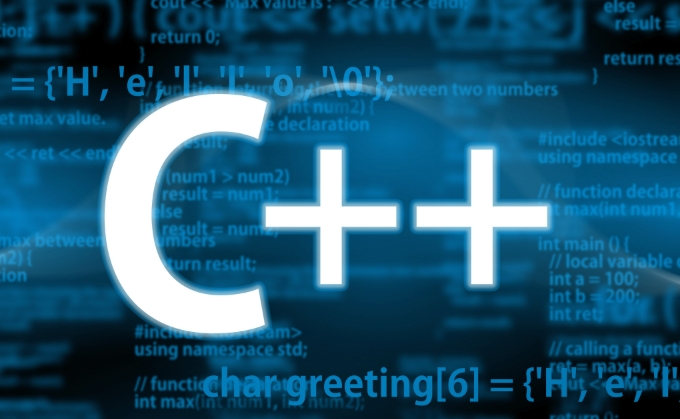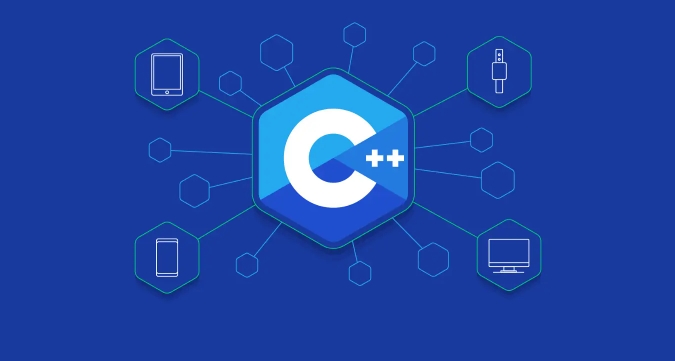To deal with endianness issues in C, we need to clarify platform differences and take corresponding conversion measures. 1. To determine the system byte order, you can use simple functions to detect whether the current system is a little-endian; 2. When manually exchanging byte order, general conversion can be achieved through bit operations, but standard APIs such as ntohl() and htonl() are recommended; 3. Use cross-platform libraries such as Boost or absl to provide conversion interfaces, or encapsulate macros that are adapted to different architectures by themselves; 4. When processing structures or buffers, you should read and convert fields by field to avoid direct reinterpret_cast structure pointer to ensure data correctness and code portability.

The key to dealing with endianness in C is that you have a clear understanding of how data is stored and transmitted. Different hardware architectures may adopt different endian orders, such as x86 is little-endian, while some network protocols or embedded systems use big-endian. If you need to read and write binary data across platforms, communicate networks or parse file formats, you have to face this problem.

Determine the byte order of the current system
To handle endianness, you must first know which platform your program runs on. It can be detected by a simple trick:

bool is_little_endian() {
int num = 1;
return *(char*)&num == 1;
}This function takes advantage of the storage of integer variables in memory. Return true if the lowest address stores the low byte (that is, the little endian). Otherwise it's big end.
Once you master this, you can decide whether you need to do endian conversion based on the system type.

Manually swap byte order
When you know clearly that a certain data is in a big-endian or small-endian format, you can convert it manually. For example, if you receive a 32-bit integer (usually a big endian) from the network and the local one is a little endian, you need to convert it into a little endian before use.
A common approach is to use bit operations or union to convert:
uint32_t ntoh_custom(uint32_t val) {
return ((val >> 24) & 0x000000FF) |
((val >> 8) & 0x0000FF00) |
((val << 8) & 0x00FF0000) |
((val << 24) & 0xFF000000);
} This approach is suitable for all platforms, but it is not necessarily optimal for efficiency. In actual development, it is recommended to use standard libraries or system APIs, such as functions such as ntohl() and htonl() , which have been widely tested and optimized.
Use standard libraries or cross-platform tools
The C standard library itself does not directly provide functions for endianness conversion, but you can rely on some cross-platform libraries, such as Boost or absl (Google's Abseil library), which all provide convenient interfaces:
- Boost.Endian : Provides a portable endian conversion template.
- absl::Endian : Google Abseil provides efficient conversion functions that support data types of various sizes.
If you don't want to introduce third-party libraries, you can also encapsulate a set of macros or functions yourself and automatically choose the appropriate implementation method according to the compiler and platform.
Common practices include:
- Use predefined macros to determine the CPU architecture (such as
__BYTE_ORDER__) - Include corresponding transformation logic for different situations
- For constant data, conversion can be completed during compilation
This ensures the portability and maintainability of the code.
Be extra careful when handling structures or buffers
When you read an entire structure from a file or network, direct memcpy may cause data errors due to endianness issues. Especially when the structure contains integer fields, it must be converted one by one.
The recommended approach is:
- Read raw data by bytes to the buffer
- Access each field with a pointer and convert it manually
- Don't directly reinterpret_cast external data into a structure pointer
For example:
uint32_t* data = reinterpret_cast<uint32_t*>(buffer offset); value = ntoh_custom(*data);
Although this method is a little troublesome, it can avoid many hidden bugs.
Basically that's it. Byte order processing is not complicated but details are easy to ignore, especially in multi-platform development. A little carelessness will lead to compatibility issues. As long as you make a conversion in the data input and output links, most traps can be effectively avoided.
The above is the detailed content of How to handle endianness in C ?. For more information, please follow other related articles on the PHP Chinese website!

Hot AI Tools

Undress AI Tool
Undress images for free

Undresser.AI Undress
AI-powered app for creating realistic nude photos

AI Clothes Remover
Online AI tool for removing clothes from photos.

Clothoff.io
AI clothes remover

Video Face Swap
Swap faces in any video effortlessly with our completely free AI face swap tool!

Hot Article

Hot Tools

Notepad++7.3.1
Easy-to-use and free code editor

SublimeText3 Chinese version
Chinese version, very easy to use

Zend Studio 13.0.1
Powerful PHP integrated development environment

Dreamweaver CS6
Visual web development tools

SublimeText3 Mac version
God-level code editing software (SublimeText3)

Hot Topics
 What is the Standard Template Library (STL) in C ?
Jul 01, 2025 am 01:17 AM
What is the Standard Template Library (STL) in C ?
Jul 01, 2025 am 01:17 AM
C STL is a set of general template classes and functions, including core components such as containers, algorithms, and iterators. Containers such as vector, list, map, and set are used to store data. Vector supports random access, which is suitable for frequent reading; list insertion and deletion are efficient but accessed slowly; map and set are based on red and black trees, and automatic sorting is suitable for fast searches. Algorithms such as sort, find, copy, transform, and accumulate are commonly used to encapsulate them, and they act on the iterator range of the container. The iterator acts as a bridge connecting containers to algorithms, supporting traversal and accessing elements. Other components include function objects, adapters, allocators, which are used to customize logic, change behavior, and memory management. STL simplifies C
 How to use cin and cout for input/output in C ?
Jul 02, 2025 am 01:10 AM
How to use cin and cout for input/output in C ?
Jul 02, 2025 am 01:10 AM
In C, cin and cout are used for console input and output. 1. Use cout to read the input, pay attention to type matching problems, and stop encountering spaces; 3. Use getline(cin, str) when reading strings containing spaces; 4. When using cin and getline, you need to clean the remaining characters in the buffer; 5. When entering incorrectly, you need to call cin.clear() and cin.ignore() to deal with exception status. Master these key points and write stable console programs.
 What is inheritance in C ?
Jul 01, 2025 am 01:15 AM
What is inheritance in C ?
Jul 01, 2025 am 01:15 AM
InheritanceinC allowsaderivedclasstoinheritpropertiesandbehaviorsfromabaseclasstopromotecodereuseandreduceduplication.Forexample,classeslikeEnemyandPlayercaninheritsharedfunctionalitysuchashealthandmovementfromabaseCharacterclass.C supportssingle,m
 What is function hiding in C ?
Jul 05, 2025 am 01:44 AM
What is function hiding in C ?
Jul 05, 2025 am 01:44 AM
FunctionhidinginC occurswhenaderivedclassdefinesafunctionwiththesamenameasabaseclassfunction,makingthebaseversioninaccessiblethroughthederivedclass.Thishappenswhenthebasefunctionisn’tvirtualorsignaturesdon’tmatchforoverriding,andnousingdeclarationis
 What is the volatile keyword in C ?
Jul 04, 2025 am 01:09 AM
What is the volatile keyword in C ?
Jul 04, 2025 am 01:09 AM
volatile tells the compiler that the value of the variable may change at any time, preventing the compiler from optimizing access. 1. Used for hardware registers, signal handlers, or shared variables between threads (but modern C recommends std::atomic). 2. Each access is directly read and write memory instead of cached to registers. 3. It does not provide atomicity or thread safety, and only ensures that the compiler does not optimize read and write. 4. Constantly, the two are sometimes used in combination to represent read-only but externally modifyable variables. 5. It cannot replace mutexes or atomic operations, and excessive use will affect performance.
 How to get a stack trace in C ?
Jul 07, 2025 am 01:41 AM
How to get a stack trace in C ?
Jul 07, 2025 am 01:41 AM
There are mainly the following methods to obtain stack traces in C: 1. Use backtrace and backtrace_symbols functions on Linux platform. By including obtaining the call stack and printing symbol information, the -rdynamic parameter needs to be added when compiling; 2. Use CaptureStackBackTrace function on Windows platform, and you need to link DbgHelp.lib and rely on PDB file to parse the function name; 3. Use third-party libraries such as GoogleBreakpad or Boost.Stacktrace to cross-platform and simplify stack capture operations; 4. In exception handling, combine the above methods to automatically output stack information in catch blocks
 How to call Python from C ?
Jul 08, 2025 am 12:40 AM
How to call Python from C ?
Jul 08, 2025 am 12:40 AM
To call Python code in C, you must first initialize the interpreter, and then you can achieve interaction by executing strings, files, or calling specific functions. 1. Initialize the interpreter with Py_Initialize() and close it with Py_Finalize(); 2. Execute string code or PyRun_SimpleFile with PyRun_SimpleFile; 3. Import modules through PyImport_ImportModule, get the function through PyObject_GetAttrString, construct parameters of Py_BuildValue, call the function and process return
 How does std::move work in C ?
Jul 07, 2025 am 01:27 AM
How does std::move work in C ?
Jul 07, 2025 am 01:27 AM
std::move does not actually move anything, it just converts the object to an rvalue reference, telling the compiler that the object can be used for a move operation. For example, when string assignment, if the class supports moving semantics, the target object can take over the source object resource without copying. Should be used in scenarios where resources need to be transferred and performance-sensitive, such as returning local objects, inserting containers, or exchanging ownership. However, it should not be abused, because it will degenerate into a copy without a moving structure, and the original object status is not specified after the movement. Appropriate use when passing or returning an object can avoid unnecessary copies, but if the function returns a local variable, RVO optimization may already occur, adding std::move may affect the optimization. Prone to errors include misuse on objects that still need to be used, unnecessary movements, and non-movable types






